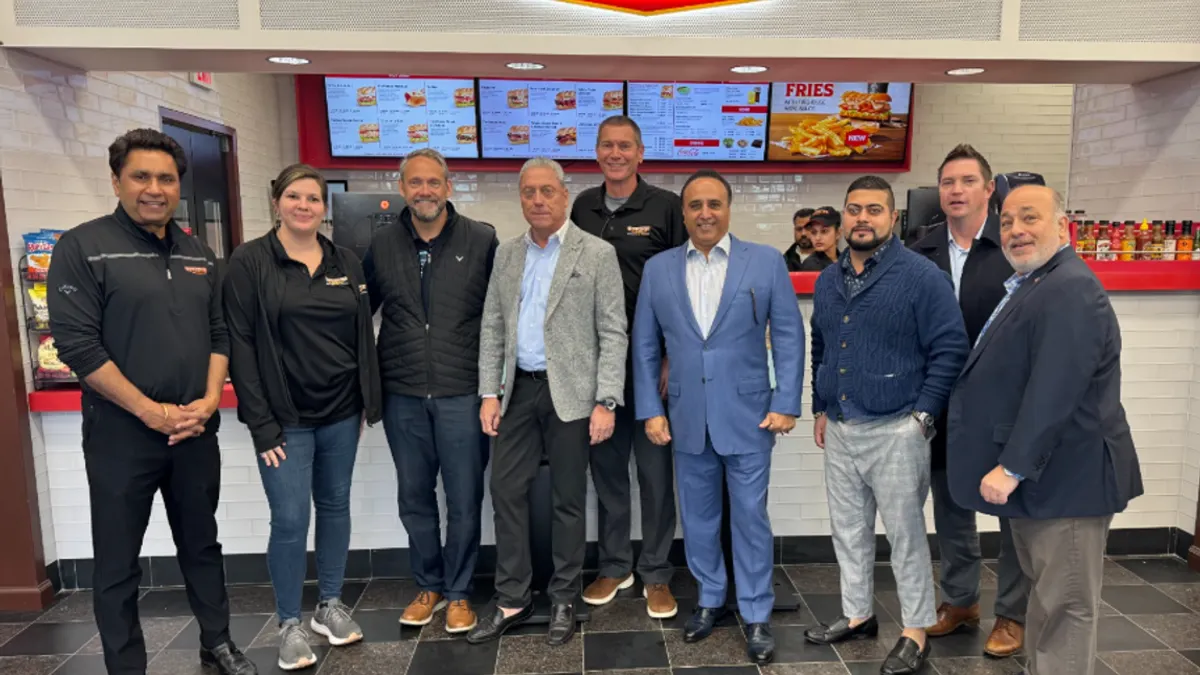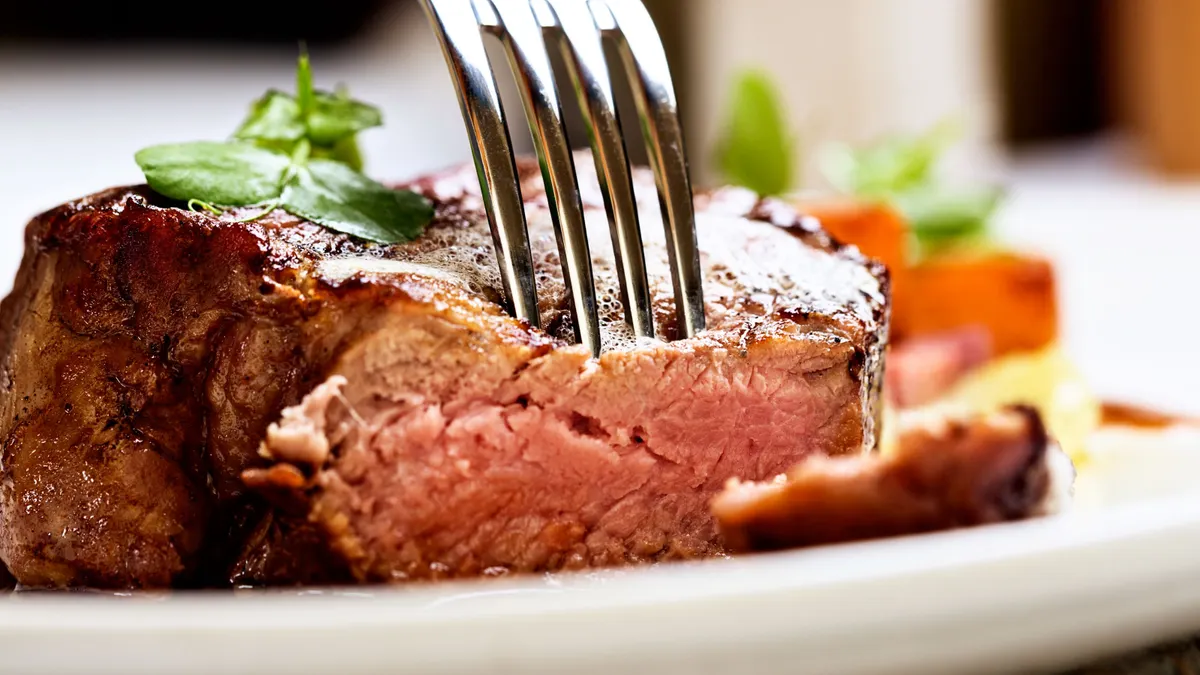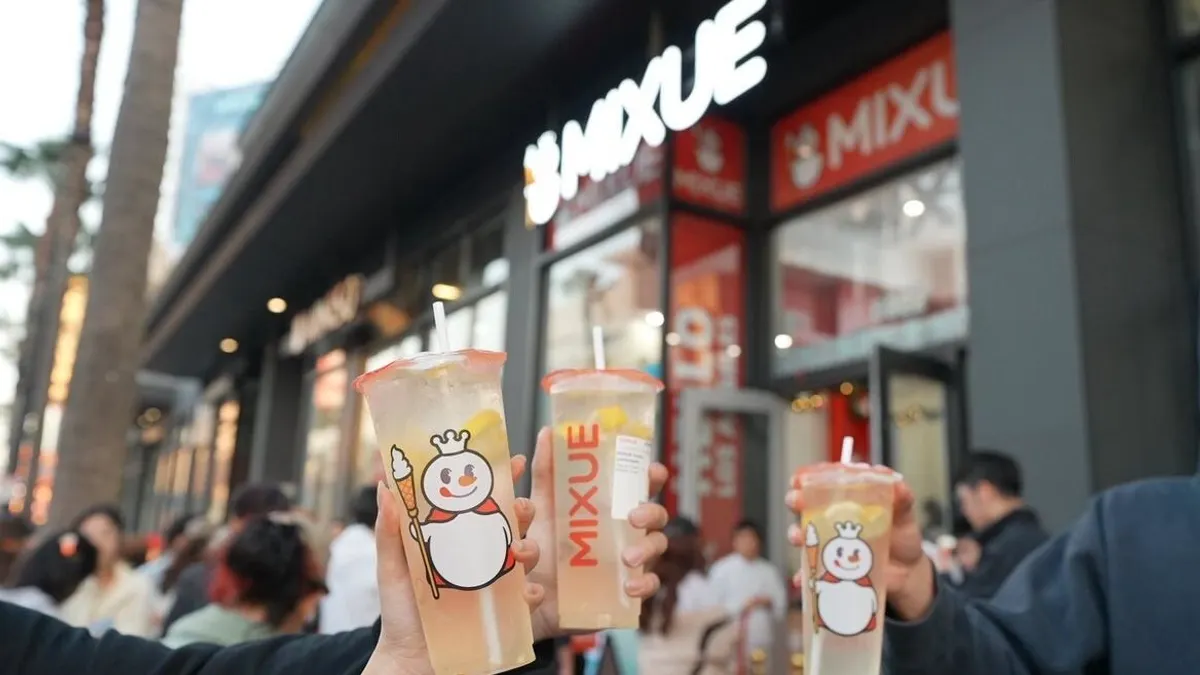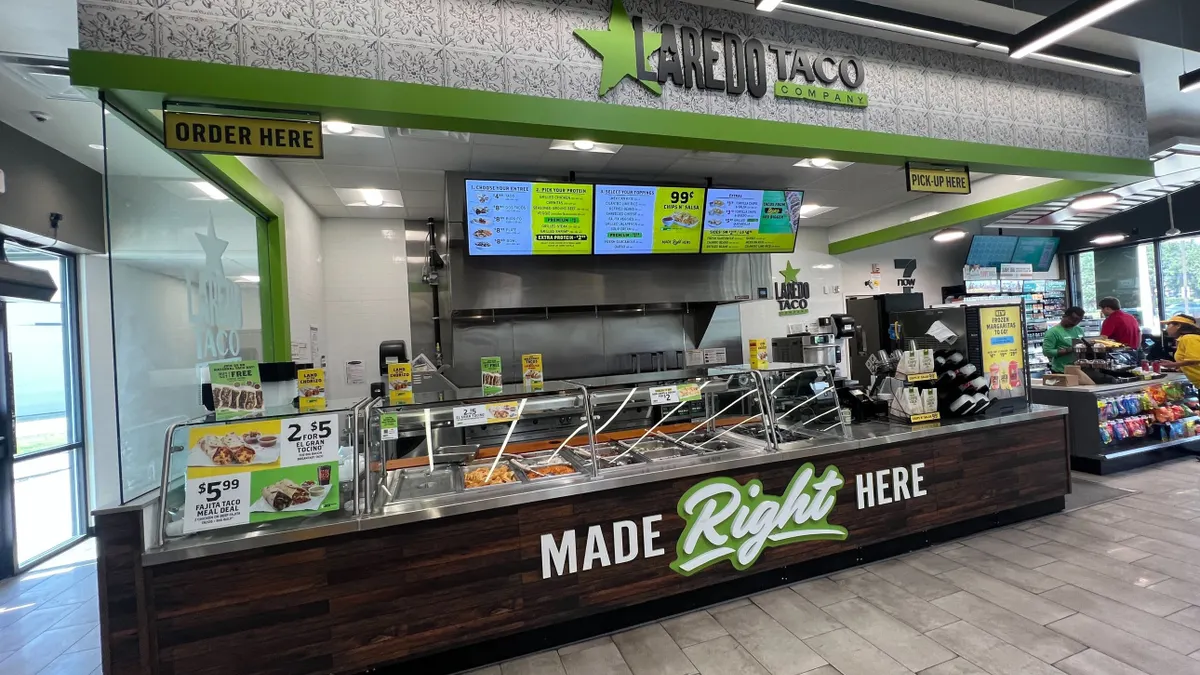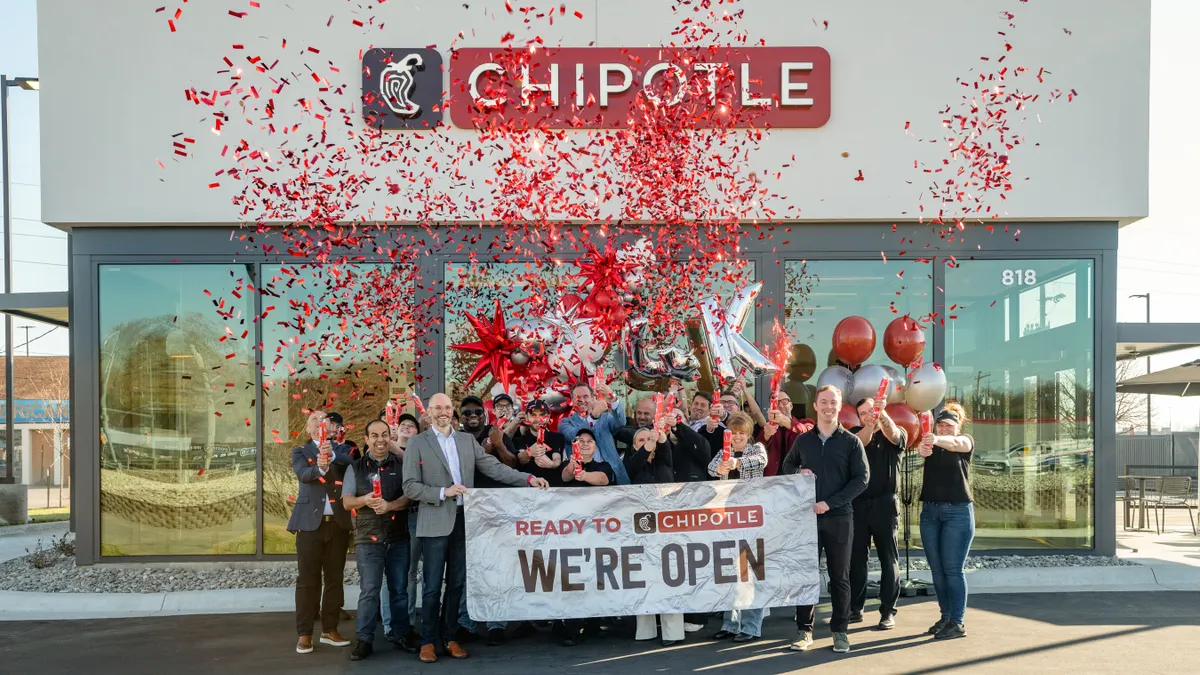From Shake Shack to Pret A Manger and Panera, major fast casual brands are ramping up efforts to reach a demographic that could prove incredibly lucrative: the traveling consumer.
"There is an opportunity to expand the brand in terms of expanding more points of access to more occasions," Panera EVP and Chief Growth and Strategy Officer Dan Wegiel told Restaurant Dive. "That is central to our strategy."
For Panera, planting its flag in more transit hubs is a part of a larger strategy to reach more customers across a variety of locations and daypart occasions. Earlier this summer, the chain entered a partnership with HMSHost, a global restaurateur that develops travel dining venues, to expand its brand within major U.S. airports and travel plazas. The Charlotte Douglas International Airport and Salt Lake City International Airport are the first on deck for next year.
Testing and expanding into different Shack formats is part of Shake Shack's continued growth, CEO Randy Garutti said during a July earnings call with investors. Shake Shack is in 12 airports and opened locations in Dallas-Fort Worth, Phoenix Sky Harbor and a second location in Kuwait International Airport. Later this year it will open at McCarren in Las Vegas, Louis Armstrong in New Orleans and Minneapolis-St. Paul in Minnesota.
"We're excited to continue to expand the ways in which we bring Shake Shack to hungry travelers in the U.S. and abroad," Garutti said.
But fast casual interest in air travel isn't a new phenomenon. The concepts began to take off in airports around 15 to 20 years ago, around the time that the category began to see rapid growth, HMS Host EVP of Restaurant Development Stephanie Havard told Restaurant Dive.
Once home to mostly QSR brands, airports have since diversified their offerings with on-trend, convenience-focused brands like Shake Shack, Blaze Pizza, Jersey Mike's and Saladworks.
But just because a restaurant brand wants to earn its wings, doesn’t mean it’s fit for an airport's food court.
Tailoring menus for air travel
Air travel concourses need cuisine that travels well. This makes some brands a better fit than others -- Pret A Manger, for example, already has a model built off of grab-and-go items. In June, HMSHost opened Pret's first U.S. airport location at Las Vegas’ McCarren International Airport, followed by outposts in Los Angeles International Airport’s Tom Bradley International Terminal and the Charlotte Douglas Airport.
In order to deliver the speed and convenience that air travelers demand, Panera is adapting its menu to include more grab-and-go items like baked good and salads, since these foods travel well, Wegiel said. The chain will also need to take a critical eye to its soup offerings, as these meals could get cold mid-flight on long, transatlantic journeys.
"Speed is very important. Convenience and access on the spot is very important," Wegiel said.
For sandwiches, the company needs to avoid ingredients that could grow soggy.
"You don't want to put something on sliced bread with tuna fish and do grab-and-go," he said. "That is not going to be a good eating experience."
Panera has been learning the ropes of airport menu mix over the years, with two locations at Sky Harbor Phoenix Airport. Its Au Bon Pain brand has also been operating in airport concourses for several years.
Digital also plays a bigger role in airports. With the need for rapid pickup or self-order kiosks, digital adoption is higher than in traditional stores, Wegiel said.
"Panera has been on the forefront with its digital platform," Havard said. "There has been a lot of adoption. It helps get people on their way quickly. We’re excited about that."
To meet this demand for speed, HMSHost has been adopting more smartphone-centric technology, such as offering an app that includes menu and pre-order capabilities at restaurants where available, Havard said. At some restaurants, diners can scan a QR code on a tabletop and pay for their meal, she said.
"You don't want to put something on sliced bread with tuna fish and do grab-and-go. That is not going to be a good eating experience."

Dan Wegiel
Panera EVP and Chief Growth and Strategy Officer
HMSHost has also expanded its airport delivery partners to include Airport Sherpa, which allows travelers to order food from anywhere inside an airport — even across terminals — and have it delivered to a gate or lounge.
"Anything we can do to increase the customer experience or enhance the customer experience, we're all for it," she said.
Panera is experimenting with technology that will allow customers to pay via tap and go technology similar to its new NFC smart posters that allow diners to purchase coffee with their phones, Wegiel said.
"I view [nontraditional locations] as becoming a lab, in many ways, for ideas that we can even retrofit into traditional cafes," he said.
Airports and travel centers, alongside other nontraditional locations, will be a much larger percentage of the company's new unit development over the next five years. That could mean having a cafe in an office building, university or hospital along with a kiosk that offers grab-and-go items. These outposts will also ensure that the brand is top of mind with busy consumers, he shared.
Airports want a mix of local and major brands
As brands explore new avenues of growth, HMSHost is focusing on filling airports with the right food and beverage mix. It will consider the local demographic, the makeup of a specific concourse and how many travelers come in and out of that area, Havard said.
"Every airport is different," she said. "That is what makes it fun."
Sky Harbor Airport, for example, is a major hub, and 60% of travelers are catching connecting flights, which means it needs plenty of fast options, she said. In Orlando’s airport, which sees many traveling families, the food programming needs to include kids meals and value options, she said.
Each terminal or airport could also differ. One terminal may be really busy in the morning and crickets at night, meaning the food programming will need to lean on the breakfast daypart, she said. If another terminal or airport experiences a traffic rush in the evening, it would need more restaurants with adult beverages, she said.
Sometimes airports will define exactly the kind of food programming they want while others will leave it to the contractor to fill in the spaces. This was the case for a new terminal at the Louis Armstrong International Airport in New Orleans.
HMSHost deployed a team into New Orleans to find some of the most iconic restaurants, such as Emerald Lagasse's Emeril's Table restaurant and James Beard award-wining chef Susan Spicer's Mondo, and signed them up early to create a mix of local restaurants and regional and national chains. It also signed a deal with Smoothie King, which is based in New Orleans, alongside Shake Shack and Starbucks.
"It’s a great, balanced program," Havard said.
And more fast casual brands and independent restaurants can be expected in airports in the years to come. At any point in time HMSHost is pursuing three to five proposals for different airports. The company opens a restaurant every three days, whether it be a conversion of an old restaurant or a new development, she said. A team is typically in the local markets a year or two before an airport issues a request for proposal to do research and connecting with local restaurants.
HMSHost staff often have to do a lot of education with local restaurants to get them comfortable with bringing their concepts to an airport in terms of designing a menu that works as well as a space, Havard said.
"We never want to lose the essence of the brand," she said. "Whatever they're famous for, we want to bring that into the airport."
But getting the essence of a brand into an airport requires much forethought, like making sure the concept doesn’t need equipment that takes up a lot of space and that people would actually want to eat that item in the airport.
"Few people would want to pick apart a lobster in an airport," Havard said.
A lot of modifications are typically needed to convert a restaurant into an airport location, she said. A traditional Panera might be 2,500 to 3,000 square feet, but an airport location may be only 1,400 square feet, Havard said.
"We want to make sure it’s going to be successful. You can't just take [a concept] and squeeze it into a smaller box," she said. "We want to make it efficient and fast enough to service the traveler."
Chains are also hungry for travel center spots
It’s not just airports that are providing new areas of growth for brands, either, but also travel centers located along busy highways. These plazas have opened up opportunities for brands like Chick-fil-A, Pret, Shake Shack, Auntie Anne’s and Starbucks.
HMSHost is working on redeveloping travel plazas along the New Jersey Turnpike over the next five years, Havard said. The company is working on bringing in brands that are popular and ones that people would be happy to stop at, she said.
"It's important for us to elevate that experience along the road, not just through design, but also through brands," Havard said.
In May, Shake Shack opened a roadside Shack at the Monmouth Travel Plaza on the Garden State Parkway in New Jersey, CEO Randy Garutti said during a July earnings call with investors. This location also contains Auntie Anne’s and Starbucks.
"Whoever wrote the rule that stopping off the highway on your next road trip couldn't be a great experience?" Garutti said. "We're working to change the perceptions of captive audience timing, bringing fresh quality to everyday places that generate so much daily traffic."






